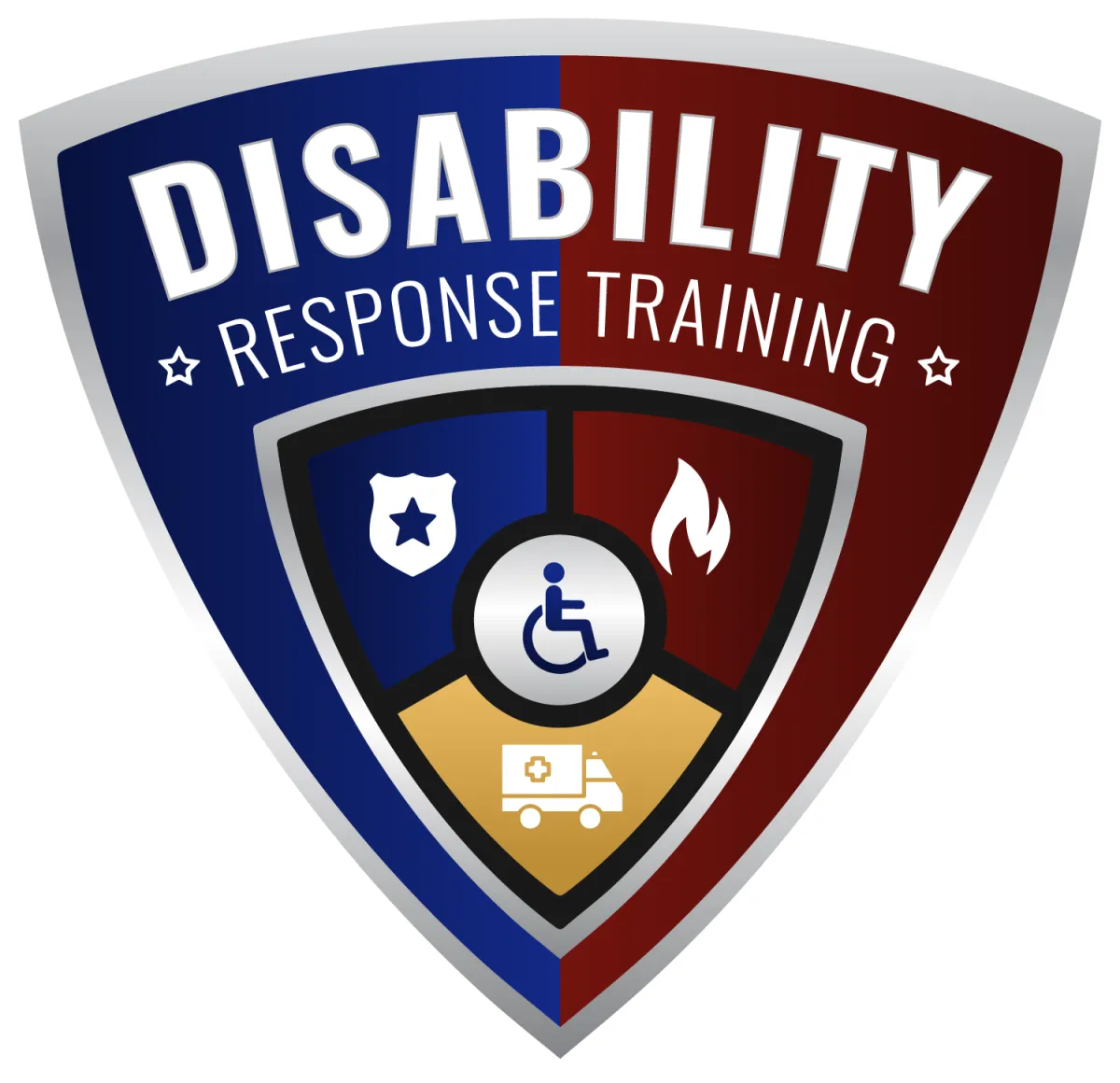See Our Latest Blogs

Why Every Law Enforcement Officer Should Experience Disability Response Training Firsthand
Cops Are Missing This Critical Training—And It’s Putting Lives at Risk
Every call is unpredictable. And every encounter could turn high-stakes.
Yet, there’s still this glaring gap in law enforcement training that most officers (and departments) don’t even realize exists—until it’s too late.
Imagine this: Your officers arrive on scene, and the suspect is in a wheelchair. He’s clearly defiant, resistant, and refusing commands. The tension is immediate—adrenaline spikes, hands maybe even go to holsters—everything is escalating fast!
How do your officers take control?! Will standard de-escalation techniques work with this person?! Do they restrain him?! If so, how?! Do they have any idea?! Are your officers—in an attempt to do the right thing—about to do the wrong thing?! Simply because they don’t know any other way. Do your officers know what they, legally, can and cannot do in this situation?!
Most officers don’t—and how could they—because they’ve never been given the necessary training. And that’s the real problem!
In a split second, a single action could mean the difference between a safe resolution or a national headline! Between de-escalation and disaster!
The simple truth is most law enforcement agencies do NOT train officers on how to properly engage with physically disabled suspects (PDS) in high-stress situations. That’s not just an oversight—it’s a critical failure that puts officers, departments, and communities at risk!
And yet, this can be easily preventable—if law enforcement gets the right training.
Let’s talk about the one essential experience every officer NEEDS before they find themselves in this exact situation.
A Few Hours of Training Could Prevent a Career-Ending Mistake
Your officers don’t get do-overs in the field. One bad call, one wrong move, one misjudged situation—and suddenly, they’re on the news, in a courtroom, and/or . . . out of a job! What if it were you?!
Now imagine this scenario: A physically disabled suspect (PDS) refuses to comply. Your officer(s) grab them the wrong way—not knowing the suspect has brittle bones, spinal instability, or severe muscle atrophy. Snap! A serious injury, a use-of-force investigation, and an army of attorneys are now tearing into your department’s policies. Or worse, . . .
Your officers misread the situation entirely—use force that was never justified—and suddenly, your department is facing a lawsuit that could cost your city and/or agency millions! Let alone the emotional distress and prolonged civil lawsuits your officers may be facing.
Why? Simple—they were never trained for this.
Think about it: you wouldn’t send your officers into a hostage situation without negotiation tactics. So why are they responding to calls involving physically disabled individuals with zero specialized training?!
A few hours of Disability Response Training (DRT) could be the difference between:
√ A resolved call vs. a national scandal
√ A confident officer vs. a career-ending mistake
√ A community’s trust vs. a public relations nightmare
This isn’t about checking a training box—it’s about protecting your officers, your department, and your city from preventable disasters!
Do you know what your officers need to know BEFORE their next high-risk encounter with a physically disabled suspect?! And if you don’t know, how are your officers supposed to know?!
What Your Officers Don’t Know Will Hurt Them
Most officers assume their defensive tactics, compliance techniques, and de-escalation training are enough to handle any suspect—but when that suspect has a physical disability, those same techniques can fail spectacularly. Without specialized training, your officers may be walking into high-risk encounters completely unprepared!
A few things to consider:
1. Pain Compliance Failures
Many control tactics rely on pain to force compliance—but what if pain doesn’t register the way officers expect? Some disabilities dull pain sensitivity, while others massively intensify it, which can cause involuntary reactions that mimic resistance.
When a suspect doesn’t respond as anticipated, will your officers instinctively make a split-second decision to increase force and escalate the situation from a misunderstanding to a full-blown use-of-force incident?!
What if your officers were trained in a simple mechanical compliance method that—if they had to go hands-on—would increase officers’ safety and drastically reduce injury to the PDS? This one skill alone could save lives, careers, department reputation, and costly litigations.
2. Misuse of Mobility Equipment
A wheelchair, cane, or prosthetic limb is not just an object—it’s an extension of the person using it. Officers who don’t know how to properly interact with a physically disabled person (PDP) and their mobility device or aid may, unintentionally, damage equipment, cause harm to the person, or escalate tension, especially if your officers are going hands-on.
These misunderstandings might turn a non-threatening encounter into a physical struggle with a potentially devasting outcome!
3. Dangerous Misinterpretations
A suspect’s arm, leg, and/or body twitches suddenly. Your young, untrained officer immediately identifies an involuntary muscle spasm as a potential threat.
The suspect slurs their words. Your officer assumes intoxication.
The suspect moves slowly, strangely, and/or fails to comply. Your officer perceives defiance.
In the chaos of an encounter, hesitation kills—but so do assumptions. One wrong move, one misinterpretation, and a justified use-of-force turns into a national headline!
Would your officers recognize the difference between an involuntary reaction and a real act of aggression or resistance from a physically disabled suspect?! And, if not, . . .
How long will it be until that misinterpretation comes back to bite your officer(s), department, and community?
4. Legal Landmines
The ADA, DOJ, and court systems do not take ignorance as an excuse. Officers who fail to “accommodate a person with a disability”—even unintentionally—risk massive lawsuits, department-wide scrutiny, and personal liability.
The legal system doesn’t just punish intentional misconduct; it punishes the uneducated and under-trained! Every wrongful arrest, excessive force claim, and civil rights violation tied to a disability puts your entire agency at risk!
What if you, personally and significantly, could reduce that risk—department-wide—would you want to?! Would you, at least, look into how it could happen?! Would you make that choice?!
5. Unintentional Escalation
Your officers arrive on scene and witness the alleged criminal walking—strangely—away from the incident. Drugs? In an effort to contain the situation, your officer(s) give the suspect a command to stop. The suspect ignores the command and continues to walk in a very erratic manner away from your officers. “Is this guy ‘fleeing’ the scene?”
Command-after-command, your officers’ directives are ignored, as the suspect continues on their way.
What are your officers thinking? In this scenario, what do you think your officers might do; what’s their protocol—or range of allowable behavior?
Likely, at least, one of your officers is escalating to hands-on.
The problem is . . . this person is deaf—and has Cerebral Palsy! The result? A preventable use-of-force incident, public outrage, and a career on the line for trying to uphold the law!
True story . . .
This Didn’t Have to Happen—When a Routine Call Becomes a National Scandal
In August 2024, two Phoenix police officers responded to a disturbance call at a local convenience store. Upon arrival, they encountered Tyron McAlpin—a deaf man with cerebral palsy— who, later officers realized, wasn’t the person originally reported in the 911 call.
Despite his visible disabilities and his wife’s frantic attempts to inform officers he could not hear, officers commanded him to the ground. When McAlpin did not react immediately—not because he was resisting, but because he couldn’t hear them and physically he was unable to respond to their commands like an able-bodied suspect—officers escalated.
Without any clear attempt to assess his condition, they tased McAlpin four times and struck him, at least, ten times.
Officers later claimed he was resisting arrest, but body camera footage told a different story. The video revealed McAlpin was not attacking when officers escalated their use of force—contradicting their official reports and exposing a devastating misjudgment.
The fallout was immediate and unforgiving. The footage spread across national news—sparking outrage, internal investigations, and renewed scrutiny over law enforcement’s handling of physically disabled suspects.
The Phoenix PD was flooded with criticism—and public confidence in the department plummeted overnight.
Experts, disability advocates, and legal analysts pointed out this entire incident could have been avoided, if officers even had a very basic training in identifying and engaging with disabled individuals.
McAlpin’s family filed a federal lawsuit against the city, alleging excessive force and ADA violations. Meanwhile, both officers are facing disciplinary review.
What should have been a routine call became a career-altering, department-damaging, and, likely, a multimillion-dollar mistake—all because their officers weren’t trained to recognize what was right in front of them.
The Edge Your Officers Don’t Have—Yet!
By now, you see your department’s gaps and understand the risks facing your unprepared officers; yes?!
Most law enforcement training fails to address how to handle PDS—and not because agencies don’t care—but because no one, in their entire department, has ever been trained in this previously overlooked area!
And that’s exactly why Disability Response Training (DRT) exists!
DRT was designed in partnership with law enforcement, built from real-world case studies, and pressure-tested by tactical experts to ensure officers walk away with practical, hands-on skills they can use immediately!
Your officers won’t just sit in a classroom. They’ll experience firsthand:
How to recognize disability-related behaviors that mimic resistance or aggression.
How to safely disengage a mobility device to prevent injury and escalation.
How to de-escalate encounters before they turn into career-ending mistakes.
How to control, cuff, and search disabled suspects without unnecessary force.
This isn’t theory—it’s tactical, real-world training designed to keep your officers safe and protect your department from the consequences of preventable mistakes.
The question isn’t whether your officers need this training; the question is—how long can your department afford to go without it?!
One Wrong Move Can Cost Everything—Or You Can Prepare Now!
Every day your officers hit the streets—without this training—they’re walking into avoidable risks. And depending on what you and your department decision-makers decide, the next time your officers encounter a physically disabled suspect, they’ll either act with confidence—or face the fallout from hesitation or escalation!
Disability Response Training is the solution! You’ve seen the headlines, and you know the truth—sooner or later another untrained officer is going to find themselves in a completely avoidable situation that spirals out of control because they lacked the necessary training to keep themselves and the suspect safe!
Invest in your officers’ career and future, your department’s reputation, and your community’s safety:
Give your officers the skills to successfully interact with physically disabled suspects
Protect your team, department, and city from costly litigations
You have the power to make the right call—let’s get your officers trained!
Contact DRT today: 520.363.6336 | [email protected]
Empowering Law Enforcement to Successfully Interact with Physically Disabled Suspects
Essential training to prepare your officers for any situation involving a physically disabled person—boosting individual safety and reinforcing public trust.
Contact:
© 2025 Disability Response Training
All Rights Reserved - Privacy Policy

